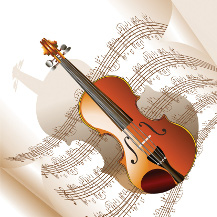Tuesday 9th November
John Florance
The Gentle Art of Arrangement
How and why composers down the years have been inspired by the music of other composers. You should hear plenty of unfamiliar pieces, some surprising, some amusing and some just odd. An entertaining time is guaranteed for all!
Appreciation by Neil Crutchley
Whenever we invite Dr. John Florance to speak to the society, we know we will get an entertaining and informative evening, delivered in a relaxed conversational style that reflects both his enthusiasm and his extensive musical knowledge and his latest presentation proved this yet again.
Musical arrangements have been around for centuries and as John so skilfully demonstrated they are many and varied. In earlier times, piano arrangements were a way of learning orchestral scores before symphony concerts, recording and broadcast made them widely available. However in more recent times many composers and conductors have felt the urge to identify with a particular work and add a touch of their own personality.
We heard excerpts from (amongst others): The Wise Virgins (Bach/Walton); Pulcinella (Pergolesi/Stravinsky); Pineapple Poll (Sullivan/Mackerras); Messiah (Handel/Beecham); Pictures at an Exhibition (Mussorgsky/Stokowski) and the Fitzwilliam Virginal Book (John Bull/Barbirolli).
It was a fascinating experience to hear these arrangements one after the other. Most of them had a strong element of the arranger’s personality; unmistakable in Beecham’s rip-roaring, cymbal clashing version of the Hallelujah Chorus; Barbirolli’s “big band” Bull; Walton’s pointed and stylish Bach, Stokowski’s sinister and sonorous “Pictures” and most surprisingly, an abridged version of Hugo Alfven’s Swedish Rhapsody by Percy Faith played by Mantovani, which, as said, uses only the “big” tunes and livens up a work that otherwise goes on for a bit too long!
This enjoyable talk was just the thing for a dark November evening.
Images




